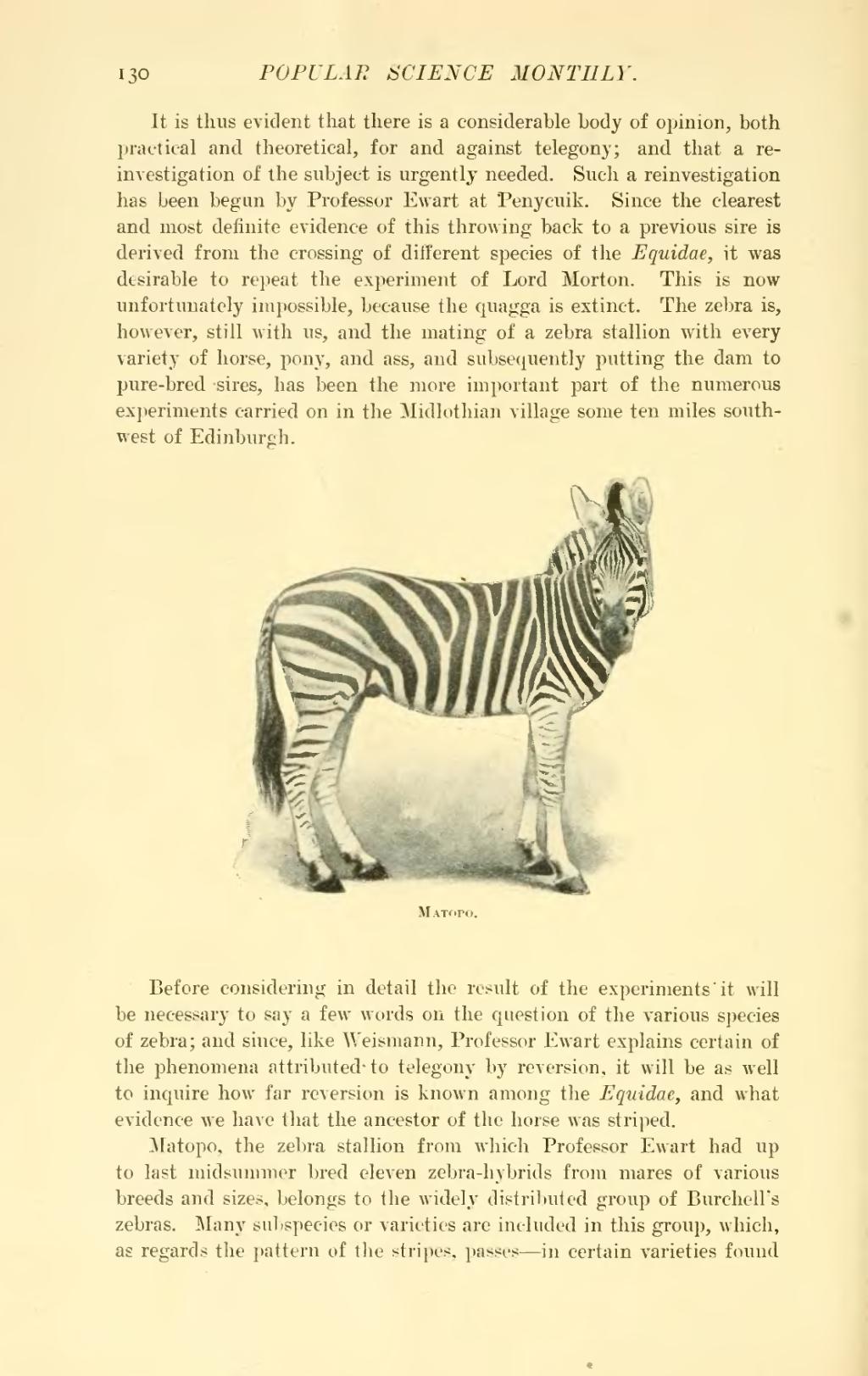It is thus evident that there is a considerable body of opinion, both practical and. theoretical, for and against telegony; and that a reinvestigation of the subject is urgently needed. Such a reinvestigation has been begun by Professor Ewart at Penycuik. Since the clearest and most definite evidence of this throwing back to a previous sire is derived from the crossing of different species of the Equidae, it was desirable to repeat the experiment of Lord Morton. This is now unfortunately impossible, because the quagga is extinct. The zebra is, however, still with us, and the mating of a zebra stallion with every variety of horse, pony, and ass, and subsequently putting the dam to pure-bred-sires, has been the more important part of the numerous experiments carried on in the Midlothian village some ten miles southwest of Edinburgh.

Matapo.
Before considering in detail the result of the experiments it will be necessary to say a few words on the question of the various species of zebra; and since, like Weismann, Professor Ewart explains certain of the phenomena attributed-to telegony by reversion, it will be as well to inquire how far reversion is known among the Equidae, and what evidence we have that the ancestor of the horse was striped.
Matopo, the zebra stallion from which Professor Ewart had up to last midsummer bred eleven zebra-hybrids from mares of various breeds and sizes, belongs to the widely distributed group of Burchell's zebras. Many subspecies or varieties are included in this group, which, as regards the pattern of the stripes, passes—in certain varieties found
